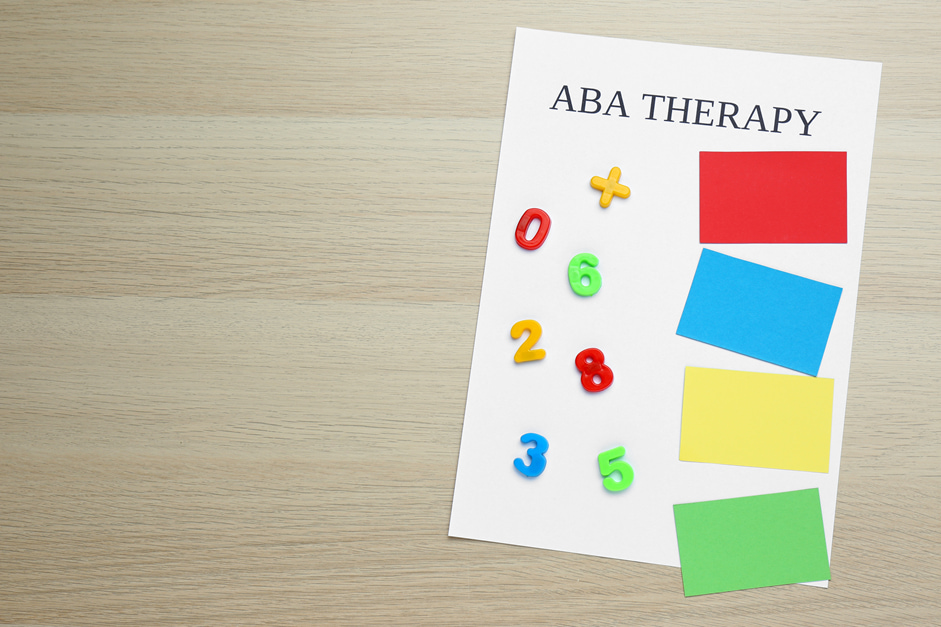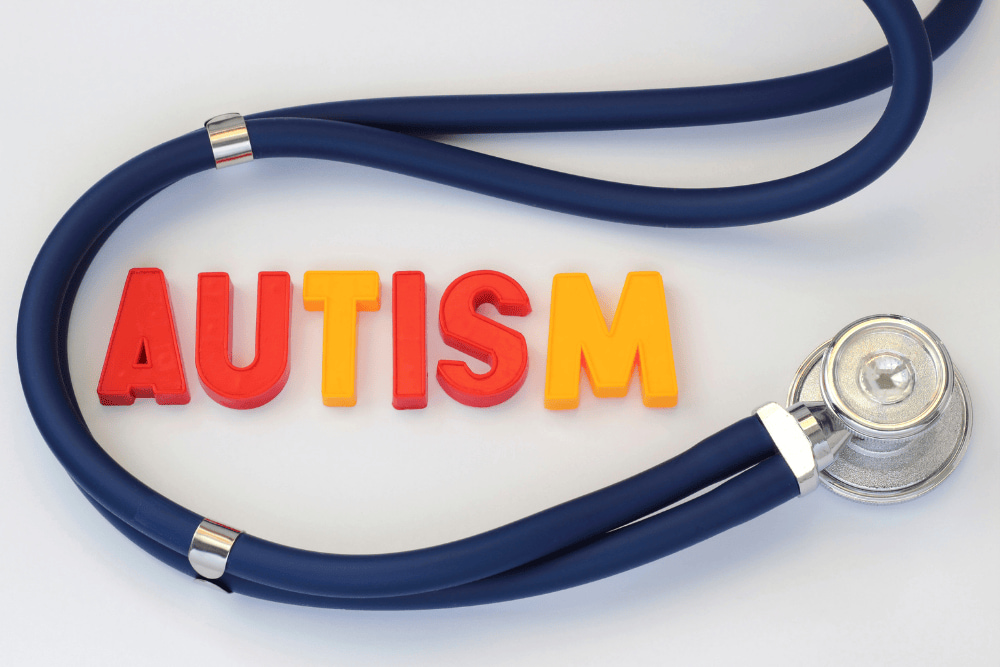
Autism Diagnosis Challenges: What Makes It So Complicated?
Diagnosing Autism Spectrum Disorder (ASD) involves numerous challenges, particularly concerning assessment tools and the significance of early diagnosis.
These challenges are specific to ASD diagnosis, including complexities in criteria, assessment, and differentiating ASD from other neurodevelopmental disorders. At Above and Beyond Therapy, we understand how overwhelming this journey can be, and we’re here to support families every step of the way with guidance, compassion, and expert care.
How Is Autism Diagnosed?
There are a variety of assessment tools designed to evaluate Autism Spectrum Disorder in young children. However, no single tool should be solely relied upon for a diagnosis. Typically, diagnostic processes combine parents’ or caregivers’ descriptions of their child’s development with professionals’ observations of the child’s behavior. These tools help determine whether a child meets diagnostic criteria for ASD, as outlined in standardized guidelines such as the DSM-5.
Gold-standard tools like the Autism Diagnostic Observation Schedule (ADOS) and the Autism Diagnostic Interview-Revised (ADI-R) are critical in assessing social functioning within a developmental framework. They facilitate a thorough evaluation of complex behaviors, particularly social behaviors. Language delays are often assessed as part of the diagnostic process, and addressing language delays can be important even if a child does not have a formal ASD diagnosis. Studies show that these standardized instruments are vital for streamlined assessments.
Despite advancements, challenges remain. The prolonged evaluation process can be daunting for families seeking answers. Researchers are currently exploring the application of AI in refining these assessments. By identifying the most predictive elements within existing tools, AI can help create smaller, more efficient evaluation subsets with enhanced accuracy
How Does Early Diagnosis Impact a Child’s Development?
Early diagnosis of autism plays a crucial role in improving long-term developmental outcomes. Early childhood is a critical period for identifying ASD and initiating interventions. Recognizing symptoms in young children can lead to timely interventions, which have been shown to enhance social skills and overall functioning. Research indicates that children diagnosed with autism before the age of 3 often respond better to therapeutic programs.
Statistics show that many parents are either unaware of early signs of autism or misinterpret behaviors as typical developmental delays, leading to delayed diagnoses. Thus, raising awareness about how early autism can be diagnosed is essential. Assessments and interventions are most effective when started before or during preschool age, as this is a key window for language and social skill development.
Timely support can significantly improve emotional regulation, social skills, and communication abilities
What Is the Diagnostic Criteria for Autism?
Understanding the diagnostic criteria for Autism Spectrum Disorders (ASD) is crucial for recognizing the challenges in autism diagnosis. The criteria established by the American Psychiatric Association, specifically the American Psychiatric Association's diagnostic criteria as outlined in the DSM-5, play a significant role in how assessments are conducted and how early interventions can be planned.
DSM-5 Criteria Overview
The Diagnostic and Statistical Manual, Fifth Edition (DSM-5) offers a standard framework to diagnose ASD. According to the DSM-5, autism diagnosis is based on the presence of specific symptoms that fall into two main categories: persistent deficits in social communication and social interaction, and the presence of restricted, repetitive behaviors.
These criteria help in identifying the core features of ASD, including impaired social interactions and deficits in communication. Moreover, these features manifest across all races, ethnicities, cultures, and socioeconomic statuses, although their expression may differ among individuals.
What Makes Autism So Challenging to Diagnose?
Getting a diagnosis of autism spectrum disorder is difficult because of several factors:
Difficulty in Adapting to Evolving Diagnostic Criteria for ASD
Diagnosing autism has become more complex as the criteria have changed over time. What used to be separate conditions is now grouped under the broader term autism spectrum disorder (ASD). This shift better reflects the wide range of symptoms, but it can also cause confusion.
With overlapping signs from other developmental disorders like ADHD or intellectual disability, it’s harder for parents and professionals to identify ASD early and accurately. As the definition of autism evolves, staying informed and using updated tools is key to getting timely support
Autism Spectrum Masked by Co-Occurring Conditions
Often, we see Autism Spectrum Disorder (ASD) occurring alongside other mental health or developmental conditions, known as co-occurring or comorbid disorders. These include ADHD, anxiety, depression, and intellectual disability. Such overlap can mask or mimic ASD symptoms, complicating diagnosis and treatment.
Co-occurring conditions influence behavior, communication, and learning, making accurate assessment critical. For example, ADHD may present as impulsivity or inattention, potentially overshadowing autism traits. Similarly, intellectual disability can delay language and social development, further blurring diagnostic boundaries.
Standardized tools like the Autism Diagnostic Observation Schedule and Autism Diagnostic Interview-Revised (ADI-R) help clinicians distinguish autism from overlapping conditions. Early identification and intervention are vital, as tailored therapies such as Applied Behavior Analysis (ABA) can address both ASD and co-occurring conditions.
Healthcare providers must conduct comprehensive evaluations and create individualized care plans to support development and mental health. Recognizing and treating co-occurring conditions improves outcomes and ensures that children with ASD receive the support they need to thrive.
Social Barriers to Autism Diagnosis
A variety of factors contribute to the barriers faced in autism diagnosis. Environmental factors, such as societal influences and local conditions, can also impact the prevalence and detection of ASD across different populations. Understanding cultural influences and disparities is crucial in addressing these challenges. The World Health Organization provides global data on autism spectrum disorder, highlighting differences in prevalence and the importance of addressing disparities worldwide.
Cultural and Societal Influences on Autism Diagnosis
Cultural beliefs significantly impact how families perceive autism and pursue diagnosis. In many communities, there are various reasons not to get an autism diagnosis, including stigma, fear of labeling, or mistrust of medical systems. Parents may prioritize alternative explanations for atypical behavior, resulting in missed opportunities for early intervention.
Healthcare providers’ cultural competency is essential. It’s vital that professionals understand and respect the cultural considerations that influence families’ experiences with autism. Lack of awareness or implicit bias among healthcare providers can hinder accurate diagnosis and treatment. In some cultural contexts, social anxiety may be underrecognized, further complicating the identification of autism and related psychiatric disorders. Importantly, discussions among autistic panelists of color reveal the detrimental effects of misdiagnosis and underdiagnosis, emphasizing the need for culturally educated providers.
Avoiding an Autism Diagnosis Due to Financial Burdens
Healthcare costs for individuals with autism spectrum disorder (ASD) present significant challenges. In the USA, these annual expenses escalate with age, as indicated by the following breakdown.
Annual Cost of Autism by Age:
- 0-5 Years: $6,467
- 6-17 years: $9,053
- 18 years and above: $13,580
Costs sharply rise for individuals with co-occurring disorders, further complicating affordability and access to necessary services. These financial burdens can deter families from seeking timely and adequate treatment, exacerbating the challenges faced in the diagnosis and management of autism.
Disparities of Autism Diagnosis Within Communities
Disparities in autism diagnosis exist across racial and ethnic lines. Research indicates that White children are diagnosed with Autism Spectrum Disorder (ASD) at a rate 19% higher than Black children and 65% higher than Latinx children. These statistics reveal significant delays for children of color in receiving diagnoses, which can impede access to essential services.
. Challenges faced by families of color in navigating autism services are compounded by societal barriers and systemic inequalities. Improving cultural competency among autism professionals can help rectify these disparities and improve outcomes for neurodivergent individuals from diverse backgrounds.
Addressing these cultural and diagnostic disparities is crucial to ensure equitable access to autism assessment and intervention services. Enhanced awareness and education on these issues can promote a more inclusive healthcare environment for all families.
Evolving Approaches to Autism Diagnosis
Enhanced methodologies and advanced technologies are paving the way for more accurate autism diagnoses. As the field progresses, new tools and innovations are being integrated to address the difficulties.
Advancements in ASD Diagnostic Technology
Recent advancements in technology are making significant contributions to autism diagnostics. Companies like Behavior Imaging have developed applications that allow parents to upload videos of their children for remote diagnosis. Clinicians analyze these videos to observe and categorize behaviors, while AI algorithms are trained to identify specific behaviors that may have been overlooked during traditional evaluations. Such innovations not only create ease of access but also bring more accurate observations from clinicians.
Additionally, Cognoa has created a mobile app screening tool for autism that parents can utilize independently. This app uses a combination of multiple-choice questions and video submissions to assist in diagnosis without necessitating a trained evaluator's presence. The integration of technology has been a game-changer, helping to streamline diagnoses and engage families more effectively in the process.
AI and Autism Diagnosis
Artificial Intelligence (AI) is playing a crucial role in enhancing the diagnostic process for autism. Research has shown that AI can help reduce the number of items in assessments while maintaining high accuracy. By identifying optimal features for diagnosis, studies have successfully minimized the number of activities in diagnostic tests without compromising the effectiveness of the evaluation process.
Moreover, the use of humanoid robots, such as NAO, by SoftBank Robotics demonstrates another innovative approach. These robots interact with autistic children, helping them practice recognizing facial expressions and improve social interactions. This technology fosters an engaging environment where children can learn and develop communication skills at their own pace, providing unlimited patience and repetitive practice beneficial for those on the spectrum.
Collectively, these technological advancements represent a leap forward in addressing the complexities surrounding autism diagnosis, streamlining assessments, and enhancing the accuracy and accessibility of services available to families and individuals impacted by autism.
Supporting Families Through the Autism Diagnosis Challenges
The challenges of an autism diagnosis are real and multifaceted. From start to finish, it can feel like there are constant barriers, but you are not alone. We’re here to help you give your child the best possible start in life. Whether it’s through our ABA therapy or parent coaching, we’re committed to walking this journey with you.
Reach out to us today, and let’s begin the path to success—together.
FAQs: Understanding the Autism Diagnosis Challenges
How long does the autism diagnostic process take?
The timeline varies, but comprehensive evaluations can take several weeks to months, especially if multiple specialists are involved. Waitlists may also extend the process.
What are some signs that may indicate autism in a child?
Common signs include limited eye contact, delayed speech, repetitive behaviors, difficulty with social interactions, and intense focus on specific interests. If you notice these signs, it's important to consult a professional.
Are autism diagnostic services covered by insurance?
Coverage varies by provider and region. Many insurance plans cover diagnostic evaluations and therapies like ABA, but you should confirm specific benefits with your insurer.
What should I do after my child is diagnosed with autism?
After your child is diagnosed with autism, the next important step is to work closely with healthcare professionals to develop a personalized intervention plan tailored to your child’s unique needs. Early intervention is key to helping your child build communication, social, and daily living skills.
At Above and Beyond Therapy, we offer specialized ABA therapy programs designed to support children on the autism spectrum in reaching their full potential. Our experienced team also provides parent coaching to empower you with the tools and strategies needed to support your child’s growth at home and beyond.


.jpg)





.png)



